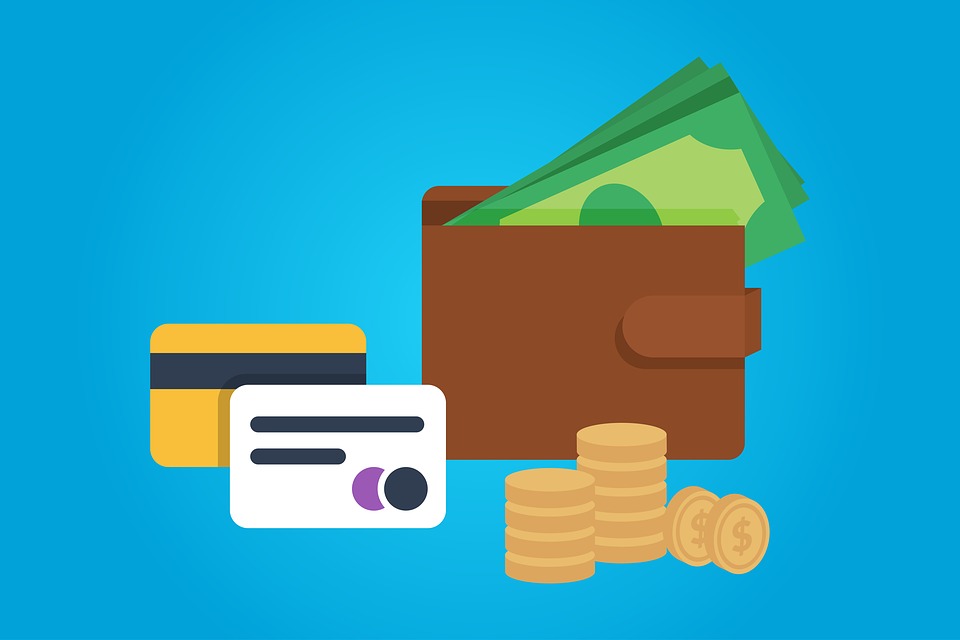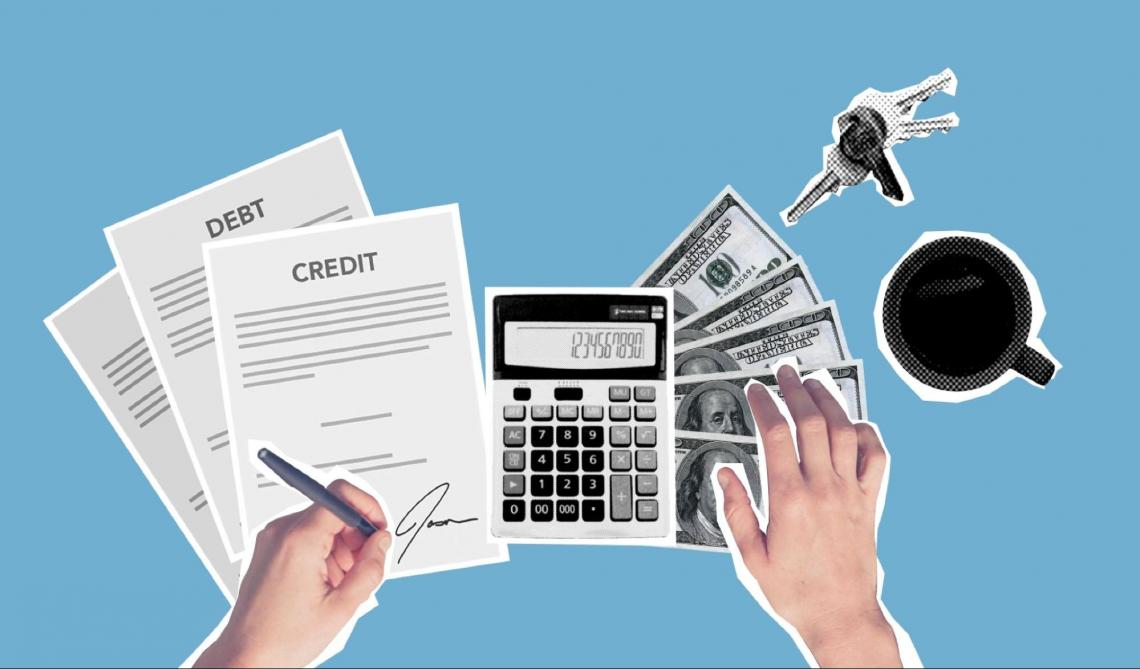Loan Features
Refers to a credit vehicle in which a sum of money is given to another party in exchange for the value or principal amount being repaid in the future.
The term loan refers to a credit vehicle in which a sum of money is given to another party in exchange for the value or principal amount being repaid in the future.

Borrowers will often be required to repay the principal sum plus interest and/or finance charges along with the loan amount added by the lender.
Typically, these are one-time sums but can also be open-ended lines of credit with a limit. Among the available types are secured, unsecured, commercial, and personal loans.
Individuals or other entities take on loans as a form of debt. In most cases, the lender is a corporation, a financial organization, or the government, which gives the borrower a sum of money.
An agreement is formed between the borrower and the lender, which may include financing charges, interest, a repayment schedule, and other terms. In certain cases, collateral may be required to secure the loan and guarantee payment.
Certificates of deposit (CDs) and bonds can also serve as collateral. A 401(k) account can also take out a loan.
What are Loan Features?
Here are some of the features:

1. Secured
A mortgage, for example, is a secured loan in which the borrower's home is used as collateral and may be lost if the borrower cannot repay the debt.
2. Unsecured
A line of credit is an example of an unsecured loan since the borrower can borrow money without putting up any security.
3. Amortizing
Principal payments on amortizing loans are stretched out across numerous periods, resulting in a reduction in the principal amount owed over time.
The payments might be identical to each period, known as equal amortizing, or they can be different in value, known as differential amortizing.

The payment plan is created to pay off the debt by a specified date. The interest expenditure on an amortizing loan is lower during the term since the principal balance reduces, resulting in paying interest on a lesser loan amount.
Example: A mortgage is an example of an amortizing loan. The loan's principal (the total amount borrowed to acquire the property) and interest expense are gradually paid down each quarter (the expense someone pays for borrowing the money).
4. Non-Amortizing
Regular payments are required on non-amortizing loans. However, the installments do not include the principal balance. After the loan term, the principal is paid in full.
The principle is not included in the regular installments; a non-amortizing loan needs smaller monthly payments. Because the principal has yet to be paid off, the ultimate payment will be significantly higher.
Example: A credit card is an example of a non-amortizing loan. There is no set payment for the amount borrowed or the interest accumulated. Thus just the minimum payment is necessary.
The credit card statement amount, which can be looked at as the primary balance, can be paid in full.
5. Variable-Rate vs. Fixed-Rate (Floating)
A loan feature is the sort of interest rate applied to the loan. Fixed-rate have a fixed interest rate that does not change throughout the loan's term.

A variable rate, sometimes known as a floating-rate loan, is based on a reference rate that changes over time.
6. Fixed-Rate
Fixed-rate shield borrowers from rising interest rates since they don't alter if the reference rate rises. Furthermore, if the interest rate declines, fixed-rate are worse for the borrower.
If the rate is 5% and the reference rate lowers, the borrower must continue to pay the 5% rate rather than the lower rate.
7. Rate-Variable (Floating)
Because the loan rate adjusts lower with the reference rate, a variable-rate loan protects the borrower from dropping interest rates.
In contrast, if the interest rate rises, this loan is bad for the borrower since their payments would grow in value (due to the reference rate increasing, resulting in a higher interest rate being paid).
Important Factors Lenders Look at to Approve the Application

Some of the factors are:
1. Credit score
The lender's decision on whether to proceed with the application or reject it from the outset is mostly based on the credit score. When it comes to unsecured loans, this is especially true.
Credit scores serve as a record of a borrower's credit history. In determining a borrower's ability to repay on time or if they will default, the lender evaluates their repayment history.
The lender's decision is based on the results of the necessary analysis.
2. Income and Employment History
The monthly or yearly income and the job history are important factors in a loan acceptance.
The lender may or may not be confident that someone will be able to repay it based on income and income stability in the form of consistent and steady job history.
Even if someone is self-employed, the lender expects that the firm has been operating smoothly for a few years and that the turnover is sufficient.
3. Debt-to-Income Ratio
Not only does having a strong salary matter, but so does the debt-to-income ratio.
If someone earns Rs.1 lakh per month and the debt payback obligations surpass Rs.75,000, they would not be eligible for a new loan since the remaining income is needed to cover the household needs.
As a result, regardless of the salary, people should maintain a low debt-to-income ratio so that lenders believe someone has enough cash on hand each month to make the payments and take care of their family's needs.

4. Collateral
The interest rate on a loan may be determined by the lender based on the collateral someone offers and its current market value.
Providing collateral will make the contract safer in the eyes of the lender, resulting in more confidence and a lower interest rate. Unsecured loans are notorious for having a higher interest rate than secured loans.
5. Down Payment
The money someone has saved and how someone has gone about saving for a down payment will boost the lender's confidence in someone. The smaller the loan amount required, the larger the down payment.
Six Personal loan Benefits anyone needs to know today
A personal loan is a great option when someone needs money quickly and doesn’t want to worry about borrowing from friends or family.

Someone may receive a personal loan fast and simply for medical needs, a wedding, overseas vacation or study abroad fees, home remodeling, or short-term cash.
A personal loan is convenient because it can be repaid over time in manageable installments and disbursed quickly with little or no paperwork.
Here are a few of the most important benefits:
1. Effortless loan processing
Someone may apply for a personal loan online, via NetBanking, at an ATM, or in person at the local bank. The application procedure is simple and requires little paperwork.
2. Disbursement in a flash
If someone is an HDFC Bank customer, someone might acquire a personal loan in as little as 10 seconds*. Others can acquire one in as little as four hours*.

3. Free to use the funds for any purpose
One of the most appealing features of personal loans is that someone may spend the money on whatever they want - a wedding, a vacation, a gadget, a company venture, or a house improvement.
For example, A home or car loan must be used for the reason it was obtained.
There is no need to put up any collateral to secure the loan. Personal loans are unsecured, which means someone doesn't have to put up any collateral, such as a home or stock, to acquire one.
4. Documentation is simple
A personal loan requires far less documentation and processing time than most other types. However, the following documents are required: evidence of identification, proof of address, and proof of income.
Someone may not need to submit documentation if someone has been pre-approved for a personal loan.
5. Payback is simple installments or EMIs
Someone may return the personal loan in easy installments or EMIs. However, payment periods are frequently adjustable, and someone may select a term that allows them to maximize the monthly outlay based on the requirements.
For instance, HDFC Bank provides loans ranging from 12 to 60 months and EMIs starting at Rs 2,162 per lac. Moreover, anyone may use an EMI calculator to figure out how much someone owes on a personal loan.
What are the Features and Benefits of a Personal Loan?
A personal loan is one for which you are approved based on your credit history and income.
When someone acquires a personal loan, they usually get the money in one lump sum and return it over time with predetermined monthly installments. The specifics, however, differ from one lender to the next.

Personal loans are unsecured with a flexible end-user and a term ranging from 12 to 60 months. Individual EMI amounts are greater if a shorter duration is chosen, but individual EMI amounts are lower if a longer tenure is chosen.
Some of the qualities and advantages of a personal loan are as follows:
1. No Collateral/Security is Required
To get a personal loan, someone doesn't need to put up any collateral, such as a house or a car.
It is granted only based on proof of creditworthiness, which is determined by factors such as credit score, income, repayment history, and employer reputation, among others.
2. Flexible End Use
These may be utilized for various reasons, including medical emergencies, vacations, home renovations, debt reduction, etc.
3. Flexible Tenure
These normally have a variable repayment period ranging from 12 to 60 months.

4. Minimal Documentation
These may be applied online or even in person with very little paperwork. Proof of identification, proof of address, and proof of income are common papers that lenders want from applicants.
5. Quick Disbursal
Once someone’s application is accepted, a personal loan can be disbursed in a few hours. If someone can get a pre-approved loan offer, turnaround times can be as little as a few minutes.
6. Flexible Loan Amount
The amount of a personal loan is determined by the borrower's repayment history, monthly income, age, occupation, employer reputation, and other variables. These are available in amounts ranging from Rs. 10,000 to Rs. 40 lakhs.
What are the Various Factors to be Considered While Seeking a Personal Loan?
Here are some things to think about before taking out a personal loan:

1. Personal Loan Interest Rate
One of the most important elements to consider when taking out a Personal Loan is the interest rate.
The interest rate someone pays is determined by several factors, including age, income stability, years of work experience, credit score, existing EMIs, repayment capacity, and loan tenure.
Someone’s EMI is determined by interest expense, which impacts the budget and long-term financial health. As a result, be certain to seek the greatest personal loan rates possible.
2. Loan Tenure
A Personal Loan normally has a maximum term of 5 years. The shorter the term, however, the better.
A longer-term reduces someone’s EMIs, making repayments more manageable, but a shorter term (say, 2 to 3 years) raises the EMI and means someone pays a higher interest rate on the Personal Loan.
3. Processing Fee and Other Charges
Lenders impose processing fees and other expenses in addition to interest rates when someone takes out a personal loan.
The processing fee is a one-time cost calculated as a percentage of the Personal Loan amount but is limited to a set amount. Therefore, it differs from one lender to the next.
While applying for a Personal Loan, a greater processing cost affects someone's overall cash outflow.
4. Repayment Flexibility
Besides the aforementioned critical criteria, consider if the lender gives someone the option to return the loan sooner and at what cost.

This flexibility might help someone pay off the debt sooner and give respite during difficult times.
However, it is necessary to practice financial discipline to return the Personal Loan on time and keep the financial health in good shape.
5. Customer Service
Someone doesn't want to have a bad experience when they go and get a personal loan while in need, right?
As a result, be sure the lender's customer service is up to par. This program can also assist someone in keeping track of someone's debt, helping someone to manage the money better.
6. Terms & Conditions
Make sure to read the terms and conditions thoroughly before making a decision. This will prevent problems in the future and offer a nice, stress-free experience.
When many individuals cannot afford to pay cash for a large purchase, obtaining a loan becomes necessary.
When someone takes out a personal loan, knowing exactly what someone is consenting to is crucial. Must also have a strong strategy to repay the loan according to the terms of the agreement with the lender.

Always get advice from a reputable financial institution and analyze the alternatives. One feature examines the loan's security. The borrower promises their assets in secured loans (called collateral).
If the borrower defaults on their loan, the lender can utilize the collateral as payment for the borrower's inability to repay the debt.
Secured loans often have a lower interest rate since collateral can balance the risk of default, making them safer than unsecured loans.
An unsecured loan is offered to a creditworthy borrower without requiring the borrower to put up any assets as security. Because the lender's risk is usually larger, the interest rate is usually higher (if the borrower defaults, no assets are being pledged, which can repay the lender).
Researched and authored by Fatemah Kamali | LinkedIn
Free Resources
To continue learning and advancing your career, check out these additional helpful WSO resources:









or Want to Sign up with your social account?